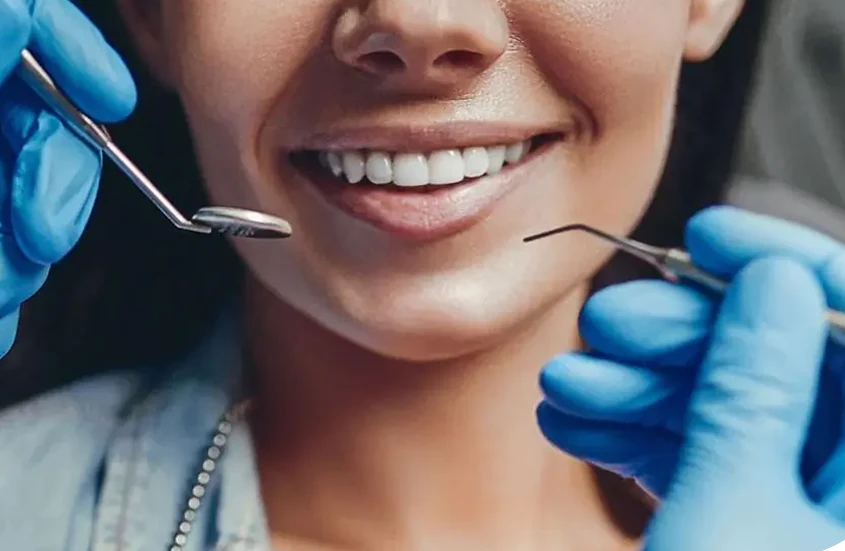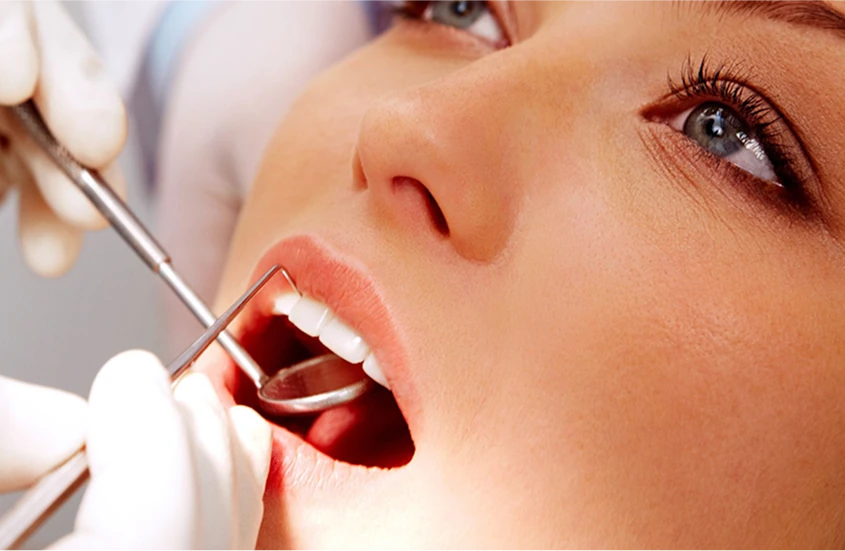Underbites and overbites—clinically referred to as underjet and overjet—are two of the most common jaw misalignment issues, also known as malocclusions. While they might seem similar, these conditions involve different jaw positions and can affect everything from chewing to facial appearance.
An underbite occurs when the lower jaw extends forward past the upper jaw. An overbite, by contrast, happens when the upper teeth overlap the lower ones excessively.
Both conditions can lead to discomfort, speech issues, and long-term oral health problems if left untreated. Thankfully, a range of treatment options—from clear aligners to corrective surgery—can help restore a healthy, functional bite.
In this guide, you’ll learn how to tell the difference, what causes each type of malocclusion, and how early treatment can help you or your child avoid complications later on.
What is an underbite?
An underbite is a type of dental misalignment where the lower jaw extends forward, causing the lower teeth to sit in front of the upper teeth when the mouth is closed. This condition is classified as a Class III malocclusion and can range from mild to severe.
Visually, underbites often result in a prominent chin and a forward-set lower jaw, which may affect facial symmetry.
Functionally, they can interfere with chewing, speaking, and jaw comfort.
Common Causes of an Underbite
Genetics play a major role in underbite development. If one or both parents have this type of jaw structure, their child is more likely to inherit it.
Childhood habits, such as prolonged thumb sucking, pacifier use beyond toddler years, or mouth breathing during sleep, can influence how the jaw grows. These behaviours may cause the lower jaw to develop further forward than it should.
Jaw injuries, particularly those sustained during childhood while the bones are still developing, can lead to long-term misalignment if not treated properly.
Abnormal jaw growth is another cause. Sometimes, the lower jaw grows too quickly, or the upper jaw doesn’t grow enough—creating a visible and functional imbalance.
Symptoms of an Underbite
- Lower teeth are visible in front of the upper teeth when the mouth is closed
- Difficulty chewing or biting into food
- Speech problems, such as lisps or unclear pronunciation
- Jaw discomfort or clicking during movement
- Frequent tension headaches or jaw pain
- Uneven or excessive wear on teeth
What is an overbite?
An overbite is a dental condition where the upper teeth overlap the lower teeth vertically more than what’s considered ideal.
While a slight overbite is normal, an excessive overlap—known as a Class II malocclusion—can affect your bite, facial balance, and long-term dental health.
In more pronounced cases, the upper front teeth may protrude significantly, sometimes referred to as “buck teeth.” This can create both functional and aesthetic concerns.
Common Causes of an Overbite
Genetics are a leading factor. If a parent has a deep bite or a jaw imbalance, their child may inherit a similar skeletal pattern.
A jaw size mismatch—when the upper jaw is larger or the lower jaw is smaller—can lead to excessive vertical overlap between the front teeth.
Childhood habits, such as extended thumb sucking, pacifier use, or bottle feeding, may push the upper teeth forward or interfere with jaw growth, increasing the risk of an overbite.
In some cases, teeth misalignment rather than jaw position is the culprit. Crowded or unevenly spaced teeth may shift forward or backward, causing the front teeth to overextend.
Symptoms of an Overbite
- Upper teeth noticeably overlap the lower front teeth
- Difficulty biting into foods like apples or sandwiches
- Uneven or premature wear on lower teeth
- Speech issues, including lisps or unclear pronunciation
- Jaw discomfort or clicking
- Changes in facial structure or chin profile
Key Differences Between Underbites and Overbites
Although both underbites and overbites fall under the category of dental malocclusions, they are quite different in how they affect your jaw alignment, facial appearance, and oral health.
An underbite happens when the lower jaw juts forward, pushing the bottom teeth in front of the upper ones. In contrast, an overbite occurs when the upper front teeth extend too far over the lower teeth, often covering them vertically.
Each condition has its own causes, symptoms, and treatment approaches. Understanding these differences helps you and your dentist choose the best care plan.
| A Quick Comparison of Underbites vs. Overbites | ||
| Feature | Underbite | Overbite |
| Jaw Position | Lower Jaw Protrudes Beyond Upper Jaw | Upper Jaw Extends Beyond Lower Jaw |
| Malocclusion Class | Class III | Class II |
| Facial Appearance | Prominent Chin and Forward Jaw | Shorter Chin, Upper Teeth May Appear Large |
| Common Causes | Genetics, Abnormal Jaw Growth, Injury, Habits | Genetics, Jaw Size Mismatch, Habits |
| Symptoms | Difficulty Chewing, Jaw Pain, Speech Issues | Chewing Discomfort, Tooth Wear, TMJ Pain |
| Treatment Options | Braces, Clear Aligners, Headgear, Surgery | Braces, Clear Aligners, Retainers, Surgery |
Treatment Options for Underbites and Overbites
Both underbites and overbites can be treated successfully, especially when diagnosed early. Depending on the severity and the patient’s age, your dentist or orthodontist may recommend braces, aligners, or even jaw surgery to correct the bite.

Braces
Braces are one of the most common solutions for both underbites and overbites. Metal or ceramic brackets are attached to the teeth and connected with wires that gently guide the teeth and jaw into proper alignment. Braces are especially effective for children and teens whose jaws are still growing, but they also work for adults.
Clear Aligners
Clear aligners like Invisalign® are a more discreet alternative to braces. They work well for mild to moderate cases of misalignment and are custom-made to fit snugly over your teeth. Aligners are removable, making them a convenient option for daily life, though consistent wear (usually 20–22 hours per day) is essential for success.
At Burnaby Dentist & Orthodontist, we are proud to be a Platinum Invisalign® provider, delivering expert aligner care right in Burnaby. Schedule an Invisalign® consultation to explore whether clear aligners are the right choice for your smile.
Jaw Surgery
In severe cases—especially for adults whose bones have stopped growing—orthognathic (jaw) surgery may be required. This procedure repositions the upper or lower jaw to achieve a balanced bite. It’s often combined with braces before and after surgery to optimize results.
Headgear
For children with developing jaws, headgear can help guide jaw growth and correct bite alignment. It’s usually used alongside braces and is most effective when started early, during key growth stages.
Retainers
After braces or aligners, retainers are essential to maintain results. They help prevent your teeth from shifting back into their original positions. Some retainers are removable, while others are fixed behind the teeth for ongoing support.
The Importance of Early Treatment
Addressing underbites and overbites early can prevent more serious dental issues down the road. Misaligned bites don’t just affect how your smile looks—they can interfere with basic functions like chewing, speaking, and even breathing.
Left untreated, these conditions may lead to:
- Speech difficulties, including lisps or trouble pronouncing certain sounds

- Jaw pain and tension, especially around the TMJ (temporomandibular joint)
- Tooth wear, enamel damage, and a higher risk of cavities or fractures
- Chewing problems, which can affect digestion and nutrition over time
Early orthodontic evaluations can catch alignment issues before they become more complex. Preventive strategies—such as discouraging thumb-sucking or using retainers after minor corrections—can reduce the need for invasive treatments like surgery later on.
The American Association of Orthodontists recommends that children have their first orthodontic assessment by age 7, when adult teeth and jaw patterns begin to emerge. This allows your dentist to monitor jaw growth and recommend early interventions when appropriate.1
At Burnaby Dentist & Orthodontist, we offer early screenings and digital imaging to help families plan orthodontic care with confidence and clarity.
Conclusion
Underbites and overbites are among the most common types of dental misalignment. While they may seem similar, each affects your jaw and bite in very different ways.
Understanding the key differences—and knowing what symptoms to watch for—can help you take action early. With modern orthodontic treatments like clear aligners, braces, or guided jaw development, it’s possible to correct most bite issues and protect your long-term oral health.
At Burnaby Dentist & Orthodontist, we tailor every treatment plan to fit your needs, using digital scans and advanced orthodontic techniques to deliver results that look great and feel natural.
If you or your child shows signs of an underbite or overbite, book a consultation with our experienced team. We offer complimentary orthodontic consultations to assess jaw alignment and discuss the most effective treatment options. Early care can prevent bigger problems—and help you or your child smile with confidence.








